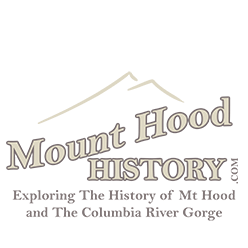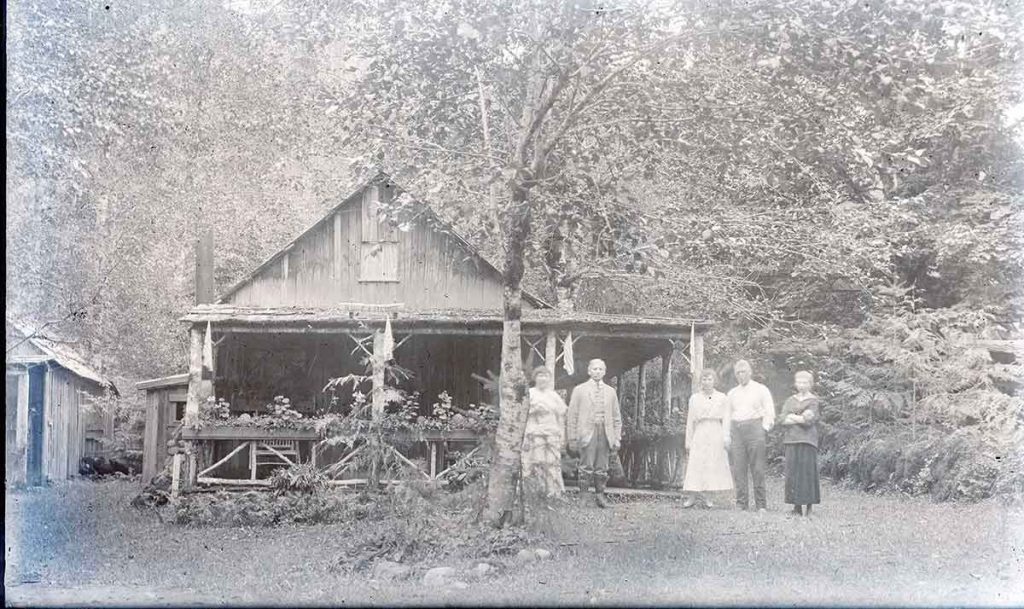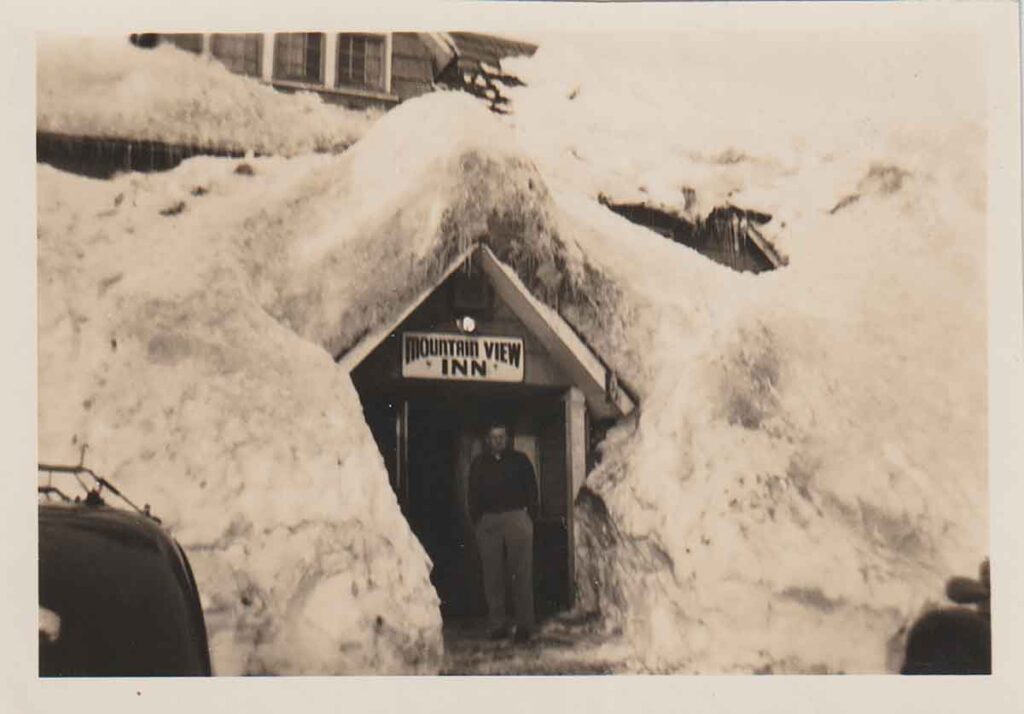This is an early view of when Billy Welch’s Ranch was in transition from a camp ground to an era of summer cabins.
Category: Historic Ephemera
The Mountain View Inn
The Mountain View Inn was originally the home of Lena Little, wife of pioneer homesteader Francis C. Little. The building was relocated from its original place to the main road through Government Camp.
Cal Calvert and His Airplane
There was one photographer from Portland Oregon who was especially creative in how he would entice customers to pose for their portraits. His name was Charles :”Cal” Calvert and he specialized in fast postcard photos. He advertised himself as “Cal Calvert the 10 Minute Post Card Man”.
Mt Hood Indian Pageant
In 1947 a soldier that had returned from the war had the idea to set up a fort and to recruit Indians from Umatilla to come and setup and encampment and show tourists the ways of the Native American. He and his wife Virginia, with help from friends, put all that they had into building the Mt Hood Indian Pageant.
Buster Brown at Paris Fair in Hood River
Here’s an antique postcard depicting a crowd that had gathered in the street in downtown Hood River, Oregon.





